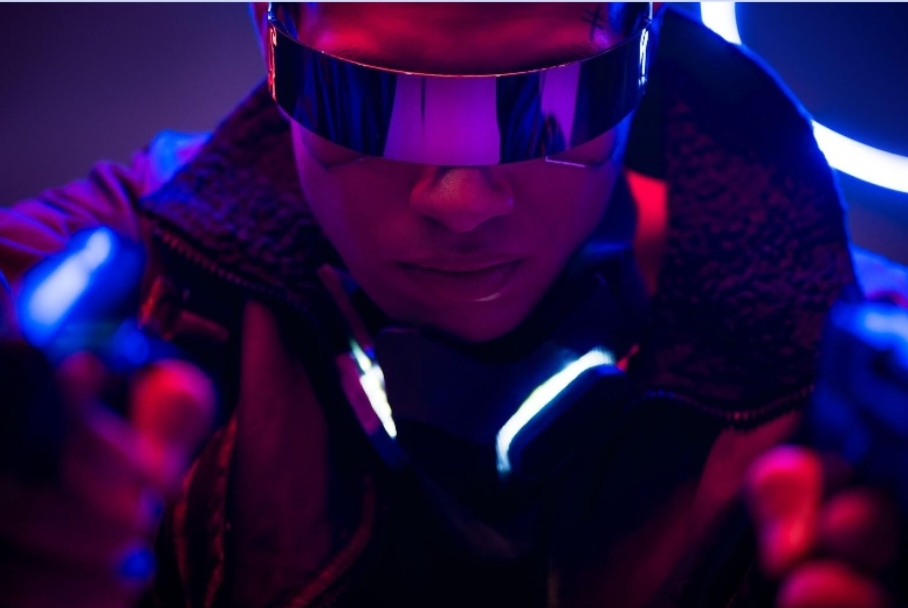Cyberpunk Game Design: A Short Guide for Creators
Cyberpunk is one of the most captivating genres in the gaming realm, and with many prominent titles released over the last decade, more and more companies have decided to create games in this genre. However, to come up with a successful idea for a title, you need to understand the specifics of the genre and figure out how to design games for it.
If you are a creator who wants to craft your own cyberpunk gaming world, read further. This guide will provide you with the main steps of game design along with key elements of the cyberpunk genre.
What is game design?
Game design is the process of creating content and rules for a game. Its goal is to create a gaming experience that will be engaging and enjoyable, with clearly defined objectives and interactions.
Every game design is created with the title’s aesthetic in mind to influence first impressions, evoke emotions, and develop the appropriate game’s brand identity.
What is the cyberpunk aesthetic?
Cyberpunk is one of the most prominent aesthetics in 2024. As explained in the following Depositphotos blog article, it is characterized by futuristic, dystopian settings with neon lights, dark environments, and advanced technologies. The colors are usually vibrant and contrasting.
Cyberpunk color palettes for game design
Choosing the right color palette for a cyberpunk game can help you create an immersive and visually striking environment. You can try one of the following color palette aesthetics:
- Neon lights: electric blue, neon pink, and bright violet as primary colors, complemented by fluorescent yellow, lime green, and white accents
- Urban decay: dark gray, charcoal, and rust brown, with accents of blood red, deep purple, and muted teal
- Futuristic tech: metallic silver, steel blue, and emerald green as primary colors, with cyan, bright orange, and soft lavender as accents
- Synthwave: hot pink, cyan, and royal blue, complemented by neon green, deep black, and magenta
- Night city: midnight blue, jet black, and dark purple, with accents of amber, bright red, and white
Keep in mind that the final choice of a palette not only depends on the colors, but also on the title’s story and plot. In some cases, even a neon rainbow color palette can help create the right aesthetics.
How to create game design in cyberpunk aesthetics
Now, let’s move on to the process of game design. While it can differ for various titles, the main steps usually include the following:
Define the concept
The first step in creating a cyberpunk game is to define its concept. Decide on the genre, for instance, RPG, action, or adventure, and the specifics of the gameplay mechanics.
Understanding your target audience is also crucial at this stage. There are around 3.32 billion active gamers across the globe, so you need to determine the niche and know exactly who your audience will be. Once you figure this out, dig deep into their preferences and expectations to tailor your game accordingly.
Develop the world
Create a detailed futuristic setting with its unique and rich atmosphere and backstory. Think about details, such as societal structures, technological advancements, and cultural elements that characterize this world. Also, think about how all of these factors will interact to create a place that would be interesting to explore.
Create characters
Naturally, defining your main protagonists is very important for the game’s success. However, don’t neglect the supporting cast. Try to develop a diverse line of characters, including allies, adversaries, and NPCs, each with their own backgrounds, motivations, and relationships. You can also create image references for them to use later in the game design process.
Design gameplay mechanics
Cyberpunk games often have very distinct gameplay mechanics: combat, stealth, hacking, and exploration. Define these mechanics early on and consider how they can combine to offer an engaging player experience. Develop systems for character upgrades and dialogue choices.
Come up with visual and audio design
Choose an art style that works well for your cyberpunk theme. Draft concepts of environments that reflect the futuristic nature of your world and develop a soundtrack that enhances the mood and atmosphere of your title.
Create a compelling story
Your main storyline should include plots, unexpected twists, and deep lore that unfolds gradually as players progress. Don’t forget to add side quests and optional content that makes the world richer and more meaningful.
Focus on UI/UX design
A user interface should be intuitive and visually consistent with the cyberpunk aesthetic. It also needs to provide essential information without cluttering the screen. Make sure that the navigation is seamless throughout game menus and interfaces to enhance overall user experience.
Create a Game Design Document (GDD)
Once you’ve come up with all of the ideas, concepts, and design elements, compile them into a Game Design Document (GDD). This document serves as a reference for further game development, outlining the game’s mechanics, story beats, character profiles, art style references, and technical specifications. You can also look at game design document templates online and use them as guidance regarding what the document has to include.
To sum up
Designing a cyberpunk game is an exciting challenge that requires a balance of creativity and technical skill. Follow the steps outlined in this guide to create a visually stunning and immersive game that captures and successfully conveys the essence of the cyberpunk genre. Also, make sure to explore various color palettes and templates to find the optimal visual fit for your game.
